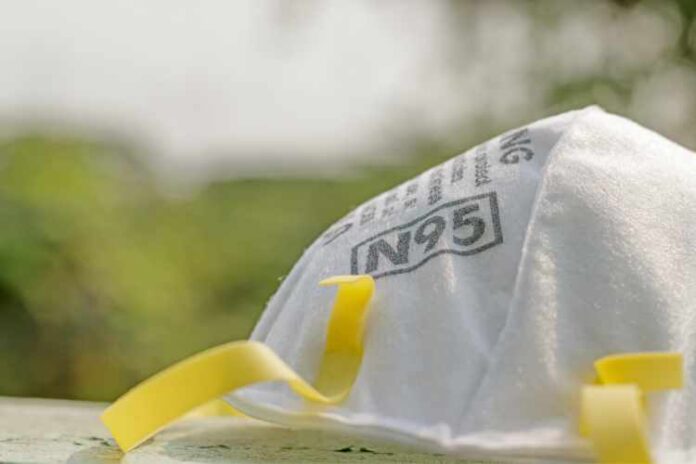The N95 face mask is a face mask that is meant to give a high degree of filtration from airborne particles while also achieving a tight fit on the face. Depending on the region they are distributed, N95 masks may be marketed and sold under FFP2 masks or a P2 N95 face mask. The border of the respirator is designed to create a seal around the wearer’s lips and nose to prevent air from leaking. Although surgical N95 respirators have the same appearance as surgical face masks and have the same filtration efficiency as N95 masks, their appearance is the same as a surgical mask, and it does not form a tight seal around the face. Surgical N95 respirators also have the exact specifications as N95 masks regarding filtration efficiency. In clinical settings, their use is commonplace among medical personnel.
The N95 Mask Comes With The Following Features And Benefits:
The effectiveness of bacterial filtration:
- The Bacterial Filtration Efficiency (BFE) of the N95 mask is near 95%. It indicates that it offers a significant degree of defence against microbes, viruses, and particulate matter in the air.
- Particulate Filtration Efficiency: The high PFE material filters about 95% of the particles in the air over 0.3 microns in size.
- Resistance to Fluids: An N95 mask will often provide resistance to various fluids.
N95 Mask Do Not Make Available To The General Public For Use
When COVID-19 started, the general recommendation was that members of the general public should not wear N95 face masks. It was done to ensure that frontline healthcare professionals could access necessary supplies. Since then, companies have increased the number of masks they can produce. As a result of the increase in availability, members of the general public interested in purchasing N95s can now do so without putting the supply available to frontline healthcare personnel in jeopardy.
Simple Face Mask
The last level of protection required in public spaces in most nations is an essential face mask, often referred to as a face covering. It is a piece of fabric that wraps around the face and covers the lips and nose. It is acceptable to wear coverings like bandanas and scarves. If one can cover their face in any way, one reduces the likelihood that one may transfer germs and viruses that are carried via the air.
Mask Used In Surgery
A surgical mask prevents the wearer’s mouth and nose from coming into touch with any potentially infectious droplets, splashes, or sprays that may be present. A surgical mask will also remove larger droplets from the air you breathe. These masks can protect others by minimising exposure to the wearer’s saliva and respiratory secretions, which helps prevent the spreading infectious diseases.
When it comes to protection, a face covering may be defined as an ordinary 3-ply mask, whereas a Type 2R surgical mask provides increased safety since they have a BFE of 95% and can withstand fluids without leaking.
Conclusion
Masks like P2 N95 face masksgive protection against droplets and airborne particles. Viruses and bacteria can enter the body in various ways, including via the eyes and open wounds. One’s hands are a significant vector for transmitting pathogens such as bacteria, viruses, and other potentially hazardous chemicals. Visors provide an additional layer of protection in addition to masks. After a single use, masks should be thrown away as a safety precaution. When someone is in a public location, it is essential to keep washing hands, use hand sanitiser, and avoid touching the face.
